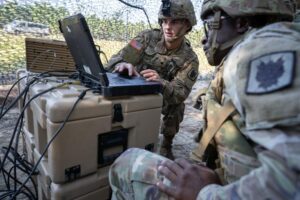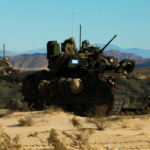
The Pentagon’s lead data official on Wednesday lauded the Army’s new digital transformation strategy, saying the service is doing a “tremendous job” in its push to integrate data-driven concepts to support future operations. “I think the Army’s doing tremendous right now, a tremendous job. They’re really in the midst of a pretty profound transformation into a digital and data-driven future,” David Spirk, the DoD chief data officer, told reporters. “I’m all in on the Army. I think their trajectory is…

 By
By 











